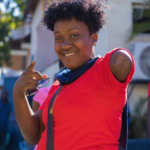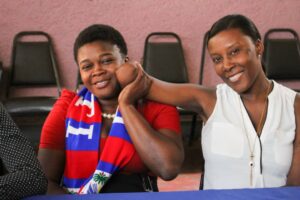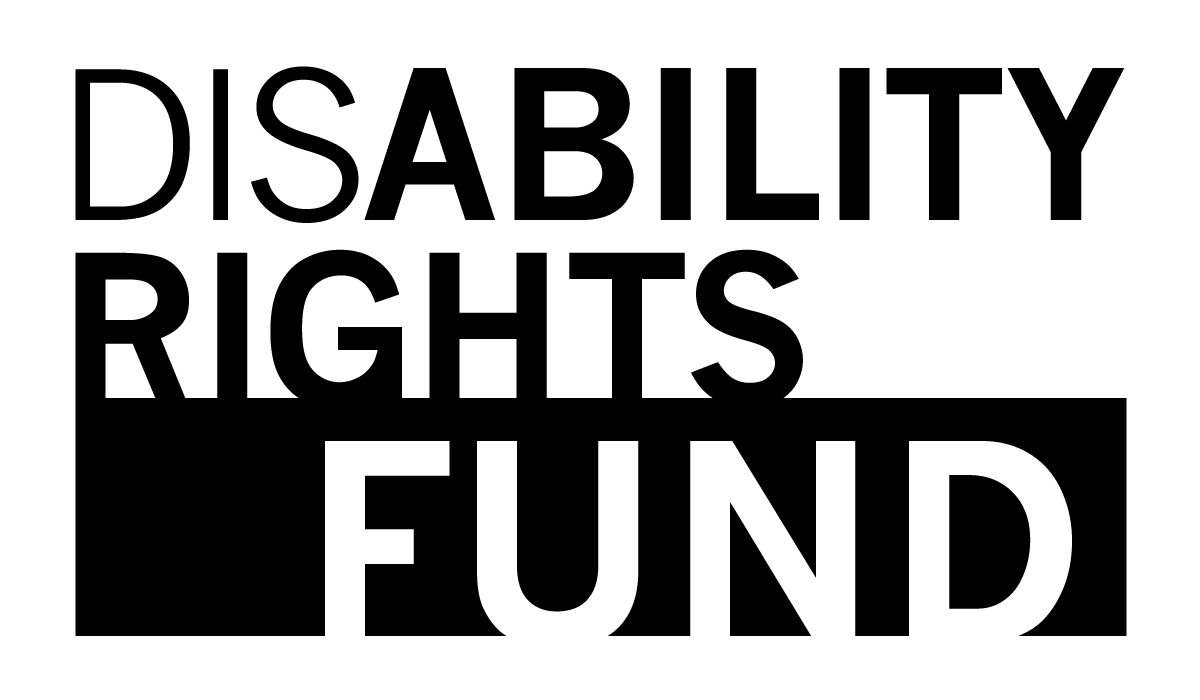Ten years have passed since that fateful day on January 12th when an earthquake of 7.3 magnitude struck Haiti. In "Ten Years Later: The Haiti Earthquake and Promises Unkept," DRF/DRAF Program Officer for Haiti and Haitians with disabilities reflect on how their lives have been changed and what still needs to be changed.
My story

Ten years later, I remember those 35 seconds as if they had unfolded yesterday. When I talk about the earthquake, I have to pay my respects to my grandmother, my aunt, other relatives, and friends who were taken away from us that day. I can’t stop thinking about my father who passed away a year after the earthquake, who excavated his mother from the rubble of a collapsed building and had to endure the loss of his sister. His sister, my aunt, who at first, survived the earthquake, was taken to the hospital. But her body disappeared a day later, while in the care of medical professionals, with no explanations.
Ten years later, I remember. But I am not the only one with a story to tell. Below are the stories of my fellow Haitians.
Judette and Nancy’s story
“Everyone knew this would happen someday, but no preventative measures were taken by the authorities of our country to reduce the impact an earthquake could have on our citizens. We could have avoided the loss of so many lives. It’s offensive,” said Judette, a young woman who became disabled following the 2010 earthquake.

On the day of the earthquake, she was at home with her boyfriend, sister, cousin, and her newborn niece. All of a sudden, she found herself in what she refers to as a black hole. When she woke up, she found herself at a hospital completely paralyzed. The doctors told her she had been under the rubble for two days before being rescued. Of the five people who were at Judette’s house that day, she was the only survivor. She spent one year in the hospital and underwent two amputations.
Before the earthquake, Judette had worked at a hospital where she had many encounters with people with disabilities. She never expected to find herself in the same situation. “I always thought it was important to support them, because I saw them as vulnerable and I pitied them,” said Judette with tears in her eyes. “When I got out of the hospital, I was ashamed of my body. I was intimidated when people looked at me. I had lost much of my interest in life. Thank God my parents were always there for me and kept me hanging on!”

Many Haitians with disabilities, like Judette, became disabled after the earthquake and are finding ways to rebuild their lives. Nancy who lost her arm when her house collapsed has been making strides. She is now part of the Association of Disabled Persons in Movement (ASHAMO), a member association of CONOIPH, which is a National Coalition and a DRF grantee organization. Nancy has taken up soccer and is dedicated to her work with Women’s Amputee Soccer Team.
Moving forward
Despite all her pain, Judette has a newfound enthusiasm for life and has plans for the future. In 2019, she joined the Union des Femmes à Mobilité Réduite d’Haiti (Women with Limited Mobility of Haiti – UFMORH), a DRF grantee organization. She is grateful for this opportunity to meet with women who face similar challenges, and to advocate for their rights.

Haitians with disabilities are working to rebuild their lives while trying to find their place in a society that continues to excludes persons with disabilities. Even with the support of their families and community organizations, they face discrimination and prejudice. Many note that the State has failed to implement a structure to allow them to live independently in their communities. All services that were delivered by INGOs after the earthquake are no longer available and the State has not been able to integrate any additional aid.

Making people with disabilities count
Before the 2010 earthquake, Haiti recorded approximately 800,000 persons with disabilities. This figure was in line with the 10% estimated by the World Health Organization. Because no census had considered citizens with disabilities, this was the most accurate metric to account for this part of our population. On January 29th of the same year, Humanity & Inclusion, formerly known as Handicap International, had estimated the number of amputees to be 2,000.
“The earthquake has exposed the level of exclusion that disabled persons face in our country. It allowed society to finally acknowledge that persons with disabilities exist, even when we are overlooked by official census data” says Judette.
Disability and Disaster Risk Reduction
In 2009, Haiti ratified the Convention on the Rights of Persons with Disabilities, which states in Article 11 that “State parties shall take all necessary measures to ensure the protection and safety of persons with disabilities in situations of risk, including situations of armed conflict, humanitarian emergencies and the occurrence of natural disasters.” Today, no concrete measures have been implemented by the State to reduce the impact that such disasters could have on the population.
For Judette, the State should be held responsible for its lack of action. She believes that without enforcement by officials, policies will be useless.
When the next disaster hits, will Haiti be ready?
Judette, Nancy, and other Haitians with disabilities are gradually recovering but still fear another natural disaster. Many believe that if the country is struck by another earthquake, there will be just as many human casualties. And those with disabilities may bear the brunt of the State’s non-responsiveness.
“The State is irresponsible. People do not adhere to building codes. We have a state that has no respect for its citizens,” says Nancy, who lost her arm after her house collapsed during the earthquake.
Many Haitians with disabilities have never received training on risk and disaster management and have no information on safe evacuation procedures. Judette’s perspective is that, if the State was accountable to its citizens, support and social protection initiatives would be effective. However, in Haiti, the Government substitutes social protection with charity.
A Call to Action
The Office of the Secretary of State for the Integration of Persons with Disabilities is currently developing a Disability Inclusive Disaster and Risk Management Guideline with Christian Blind Mission (CBM)’s support. This guide is meant to support humanitarian actors, to champion inclusion, and ensure that no one is left behind. This is an important step; however, we need to mandate that the State, as the main bearer, does its part at the local and national level.
Ten years later, we remember, and we renew our commitment to the fight for our rights. Together let’s scream out loud: No more promises, we want actions now!
Ten years later, I remember every second, every day, the distress, the promises, and all the resolutions. Ten years later, I am standing strong with my people, cherishing the happy memories we share with those who have left us, fighting with survivors, and hoping that we have effectively learned our lesson as a nation. – JoAnn Garnier

